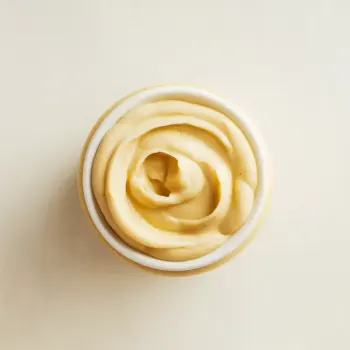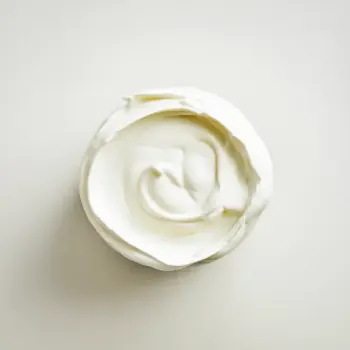Mayonnaise and sour cream are creamy condiments; mayo is oil and egg-based with a rich flavor, while sour cream is dairy-based with a tangy taste. They're used differently in cooking for dips, dressings, baked goods, and toppings, with varying textures and nutritional profiles.

Mayonnaise, commonly known as mayo, is a thick, creamy dressing made from oil, egg yolks, and an acid, usually vinegar or lemon juice. It's emulsified to a smooth, velvety consistency and often used as a spread, dressing, or base for various sauces.

Sour cream is a dairy product obtained by fermenting regular cream with certain kinds of lactic acid bacteria. The bacterial culture, which sours and thickens the cream, gives sour cream its signature tangy taste and a creamy texture.
Mayonnaise and sour cream differ in their base ingredients; mayo is oil-based, while sour cream is dairy-based. This results in differences in taste, with mayo being rich and neutral, and sour cream having a distinctive tang. The texture of mayo is thicker and glossier, whereas sour cream is lighter and more dollop-able. They also vary in calorie content and nutritional profile.

Your ultimate Recipe Box, Meal Planner, and Cooking Class all in one
Best used in dips like aioli, tartar sauce, or as a base for a creamy dressing. Expect a smooth, rich flavor that can be enhanced with garlic, herbs, or spices. For best results, blend mayo with other ingredients until well emulsified. Ideal for dips such as onion dip, nacho cheese dip, or a base for a lighter, tangier dressing. Expect a pronounced tanginess that can be balanced with herbs or mellowed with honey. Stir sour cream gently to maintain its texture.
Mayo can be used in cakes or bread for added moisture. Use it in chocolate cake to create a rich, dense crumb. Just a dollop can replace eggs and oil in certain recipes, resulting in a surprisingly tender texture. Sour cream is fantastic in baked goods like coffee cakes, muffins, or scones. It imparts a slight tang and creamy density. It's also great for creating a tender texture in doughs and batters.
Creates a rich, creamy base for dressings like Caesar or ranch. Expect a smooth, velvety texture that clings well to greens and vegetables. Combine with vinegar or lemon juice for a balanced flavor. Provides a lighter, tangy alternative for dressings. Works well in coleslaw or potato salad for a refreshing taste. Mix with herbs and spices for a zesty twist on traditional dressings.
An excellent base for aioli, remoulade, or as a spread on sandwiches. Expect a rich, cohesive layer that complements other sandwich ingredients. Perfect for dolloping on tacos, soups, or baked potatoes. Adds a cool, tangy contrast to warm dishes. Can be thinned out for drizzling over nachos or enchiladas.
Mayonnaise and sour cream have different macronutrient profiles due to their base ingredients, with mayo being higher in fat and calories, and sour cream containing more protein and less fat per serving.
| Nutrient | Mayonnaise ( per Tablespoon ) | Sour Cream ( per Tablespoon ) |
|---|---|---|
| Fat | 10g | 2.4g |
| Sodium | 105mg | 11mg |
| Calcium | 0.6mg | 13mg |
| Protein | 0.1g | 0.3g |
| Calories | 94 | 23 |
| Carbohydrates | 0.1g | 0.6g |
Yes, but it will alter the flavor and texture, making it richer and less tangy than if sour cream were used.
Sour cream is generally lower in calories and fat than mayonnaise, but 'healthier' depends on your nutritional goals.
Yes, sour cream can be used as a lighter, tangier alternative to mayonnaise in sandwiches.
They can be substituted for one another in dips, but will result in a different flavor profile.
Absolutely, mixing the two can balance richness and tanginess for a unique flavor in dressings, dips, and sauces.